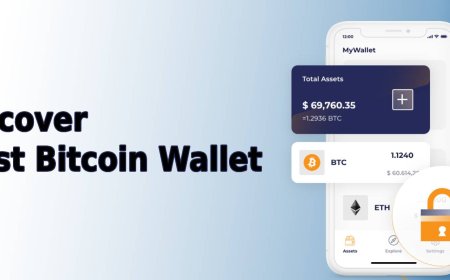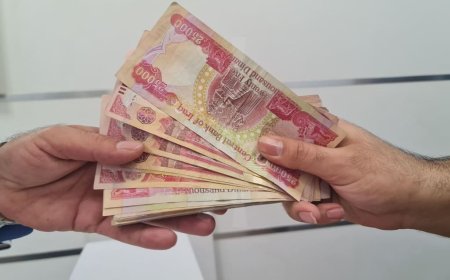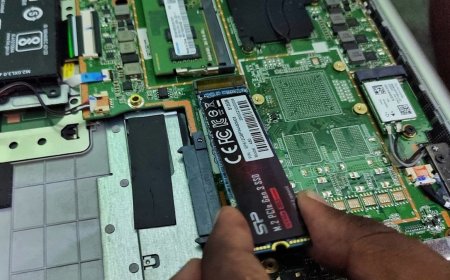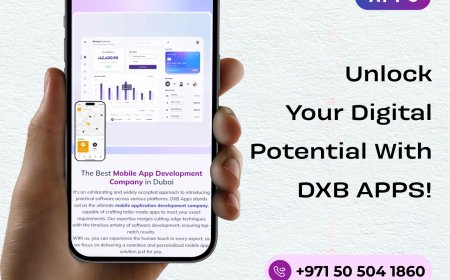How Bitcoin Transactions Work: Behind the Scenes of Sending BTC
This article explains how Bitcoin transactions work behind the scenes—from creating and signing transactions to broadcasting them on the blockchain. It also highlights the importance of using the best bitcoin wallet or best bitcoin wallet app to ensure secure, efficient, and hassle-free BTC transfers.

Bitcoin has revolutionized the way we think about money. It offers a decentralized, peer-to-peer system that allows anyone in the world to send and receive value without the need for banks or intermediaries. But have you ever wondered what really happens when you send Bitcoin from one wallet to another? In this article, well take a closer look behind the scenes of how Bitcoin transactions work and why choosing the best bitcoin wallet or best bitcoin wallet app is crucial to ensure secure and seamless transactions.
What Is a Bitcoin Transaction?
A Bitcoin transaction is a digital transfer of value from one person to another over the Bitcoin network. Each transaction is recorded on the blockchain, a public ledger maintained by thousands of decentralized nodes (computers) around the world.
Every transaction consists of three basic components:
-
Input The source of the funds (previous transaction).
-
Amount How much BTC is being transferred.
-
Output The destination address (receivers wallet).
When you send Bitcoin, your wallet constructs a transaction using your previous BTC transactions as inputs and creates a new output to the recipients wallet address.
Step-by-Step Breakdown of a Bitcoin Transaction
1. Creating the Transaction
When you initiate a Bitcoin transfer through your wallet app, the software gathers your unspent transaction outputs (UTXOs) to cover the amount you want to send. These UTXOs act like digital bills youre using to make a payment.
If youre sending 0.3 BTC and have three UTXOs worth 0.1 BTC each, your wallet combines them to cover the transaction. If the total exceeds the amount to send, the remainder (called change) is sent back to a wallet address you control.
2. Signing with Your Private Key
Once the transaction is created, your wallet signs it with your private key, which proves ownership of the Bitcoin being spent. This digital signature ensures that the transaction is valid and hasnt been tampered with.
This is why securing your private keys with the best bitcoin wallet is essentialif someone gains access to your key, they can steal your BTC.
3. Broadcasting the Transaction
After signing, the transaction is broadcast to the Bitcoin network. It enters the mempool (short for memory pool), where it waits to be picked up by a miner. Think of the mempool as a waiting room for unconfirmed transactions.
4. Transaction Fees and Mining
To incentivize miners to include your transaction in the next block, a transaction fee is paid. The higher the fee, the faster the transaction is likely to be confirmed. Once a miner adds your transaction to a new block and that block is added to the blockchain, your transaction becomes confirmed.
Each confirmation adds more security to the transaction. Typically, one confirmation is enough for small payments, while larger transactions might wait for 3 to 6 confirmations.
Why Your Wallet Choice Matters
The entire process of sending and receiving BTC relies heavily on the software you use to manage your private keys and create transactions. Thats where the best bitcoin wallet app plays a vital role.
Heres what to look for in the best bitcoin wallet:
-
Security: The wallet should offer strong encryption, backup options, and ideally, non-custodial control over your private keys.
-
Ease of Use: Beginners need intuitive UI/UX, while advanced users appreciate features like fee customization and SegWit support.
-
Compatibility: The app should support Bitcoin and be available on the devices you use (iOS, Android, desktop).
-
Fee Control: Being able to adjust network fees can help optimize transaction speed and cost.
-
Multi-Sig or Biometric Features: Advanced wallets offer multi-signature security or biometric login options for added protection.
Wallets like Plus Wallet offer a secure and intuitive interface for Bitcoin users, combining the best in functionality and protection. Its reputation as one of the best bitcoin wallet app choices is built on user trust, robust encryption, and seamless integration with decentralized features.
Common Issues and How to Avoid Them
1. Stuck Transactions
Sometimes, transactions remain unconfirmed for a long time due to low fees. The best bitcoin wallet app allows users to set custom fees or use Replace-by-Fee (RBF) features to speed things up.
2. Wrong Addresses
If you copy and paste the wrong wallet address, your funds could be lost permanently. Always double-check addresses, or use QR codes to minimize risk.
3. Phishing Attacks
Use only trusted wallet apps from official app stores or verified websites. Avoid clicking links in suspicious emails or messages.
Final Thoughts
Understanding how Bitcoin transactions work gives you more confidence and control in your crypto journey. Every time you send BTC, your wallet builds, signs, and broadcasts a transaction, which is then verified and recorded on the blockchain. Its a powerful, transparent, and secure systemwhen used properly.
Thats why choosing the best bitcoin wallet isnt just about convenience; its about safeguarding your digital wealth. Whether youre a newcomer or a seasoned holder, using the best bitcoin wallet app ensures that your transactions are smooth, your private keys are secure, and your funds are always under your control.
As Bitcoin adoption continues to grow in 2025 and beyond, understanding and securing your transactions is more important than ever. Equip yourself with knowledge and the right tools to make every Bitcoin transaction count.





























